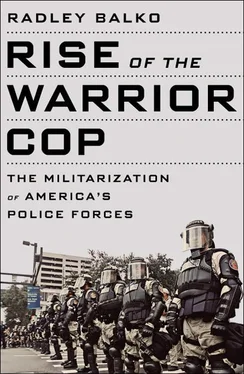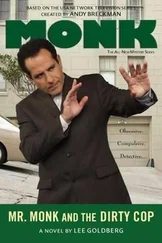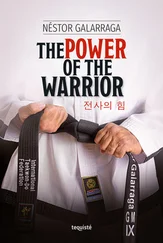Although I applaud lawmakers for passing this bill over the objections of law enforcement, I was disappointed that state law enforcement groups decided to oppose this measure rather than embrace it as an opportunity to restore the public trust. I remain especially concerned with the argument put forward that only law enforcement should police itself and that it is somehow inappropriate for elected leaders to legislate oversight and accountability. I cannot disagree with this argument more. As elected officials, we must take full responsibility for the law enforcement departments that we fund and authorize, and we must hold our law enforcement officials to the highest standards and ideals. 18
By the following spring, the Maryland Governor’s Office of Crime Control and Prevention released the first batch of statistics. They were predictably unsettling. For the last half of 2009, SWAT teams were deployed 804 times in the state of Maryland, or about 4.5 times a day. In Prince George’s County alone, which has about 850,000 residents, a SWAT team was deployed about once a day. According to an analysis by the Baltimore Sun , 94 percent of the state’s SWAT deployments were to serve search or arrest warrants, leaving just 6 percent that were raids involving barricades, bank robberies, hostage takings, and other emergency situations. Half of Prince George’s County’s SWAT deployments were for what were called “misdemeanors and nonserious felonies.” More than one hundred times over a six-month period, Prince George’s County sent police barreling into private homes for nonserious, nonviolent crimes. 19Calvo pointed out that the first set of figures confirm what he and others concerned about these tactics have suspected: SWAT teams are being deployed too often as the default way to serve search warrants, not as a last resort.
In January 2011, Calvo settled his lawsuit with Prince George’s County. Although the details haven’t been made public, we know that it involved a substantial sum of money as well as reforms to the way Prince George’s County uses its SWAT teams, the types of cases in which the teams are deployed, and better training in dealing with the pets they encounter in raids, as well as treating them more humanely. 20

HOW DO WE RETURN TO A MORE ROBUST EMBRACE OF THE Castle Doctrine, the Fourth Amendment, and an unbreachable divide between the police and the military? Overcoming a trend that has extended across two, possibly three, generations sounds like an impossibly difficult task. And indeed, some of the people interviewed for this book are skeptical that it can be done. Donald Santarelli, the now-regretful father of the no-knock raid, says, “I don’t think it’s possible to roll any of this back now…. It would take serious leadership, probably from nobody less than the president. It would take a huge scandal, which doesn’t seem likely…. But we’re not given to revolutionary action in this country. Each generation is a little more removed from the deep-seated concerns about liberty of the generation before. We just don’t seem to value privacy and freedom anymore.” 21
Cheye Calvo’s example shows that change is possible—even though much more of it is in order. Despite falling crime rates, and even after the public outrage and media scrutiny engendered by the Calvo raid and other high-profile incidents, the number of SWAT raids continues to rise.
Still, even if the will to bend the arc of police militarization doesn’t currently exist, there are some policy reforms that would at least improve the current state of affairs. In particular, the concerned police officers and public officials interviewed for this book have suggested a number of possible reforms—some abstract, some concrete, some within reach, and some that at least at the moment seem unattainable.
The Drug War
To begin at the least likely end of the spectrum, the best reform to scale back the overly militarized, dangerously civil liberties–averse style of policing that prevails in this country would be to end the drug war altogether. Complete legalization is, of course, never going to happen. But even something short of legalization, like decriminalization, would remove many of the reasons why we’re fighting the drug war as if it were an actual war. President Obama’s drug czar, Gil Kerlikowske, at least seemed to understand the value of rhetoric when he made a point in 2010 of stating that he didn’t think it was appropriate to use the phrase “drug war.” Unfortunately, he didn’t change any of the actual tactics used to enforce the federal drug laws. As indicated earlier, the raids, grants, and giveaways of Pentagon gear have all only increased since Obama took office.
But just ending the federal drug war and the federal incentives toward militarization would help. SWAT teams would probably continue to exist and, at least in the short term, would find other, probably equally objectionable missions. But ending the federal drug war could begin to unwind the violent paramilitary task forces and the us-versus-them, black-and-white drug-war mentality. If the federal government were to end the Byrne grants, cut off federal funding tied to drug enforcement, end the Pentagon giveaway program, and get rid of the federal equitable sharing program that lets local police departments get around state asset forfeiture laws and makes drug warring more lucrative (and therefore a higher priority), we’d see more of these tactical teams begin to disband because of the expense of maintaining them. We’d almost certainly see the multi-jurisdictional task forces start to dry up, since they’re often funded exclusively through federal grants and forfeiture. Those tactical teams that remained would no longer be incentivized to go on drug raids. Perhaps some still would. But without the money to lure them, it seems likely that the expense of deploying them would persuade police departments to reserve them for the sorts of missions for which they were originally intended.
At the very least, the federal government should respect the states that have already expressed a desire to ease up on the drug war and stop sending in heavily armed battle teams to raid medical marijuana dispensaries and growers who are licensed and regulated under state law.
Legislatures or city councils could also pass laws restricting the use of SWAT teams to those limited, rare emergencies in which there’s an imminent threat to public safety. They could prohibit the use of no-knock raids or even forced entry to serve warrants on people suspected of violent crimes. Failing that, policymakers could simply put more restrictions on search warrants. For example, they could prohibit the use of dynamic-entry tactics for any warrant obtained with only the word of an informant. The records of informants should be made available to defense attorneys and attorneys in civil suits, with the stipulation that any identifying information be redacted. (Informants’ records could simply be a set of numbers indicating their success rate.)
Ending any of the federal drug war policies that set all of this in motion would be a step in the right direction.
Halt the Mission Creep
There is no need for regulatory agencies at any level to be conducting SWAT raids. The Department of Education and the Food and Drug Administration don’t need their own SWAT teams. SWAT teams shouldn’t be raiding American Legion halls to break up charity poker games. They shouldn’t be raiding any poker games. Nor should they be used to confront Tibetan monks who have overstayed their visas, or sent to storm the offices of doctors suspected of overprescribing painkillers. 22And the idea of SWAT teams enforcing underage drinking laws, performing occupational licensing inspections, or checking that beer bottles are adequately labeled ought to be so self-evidently preposterous as to be laughable.
Читать дальше













